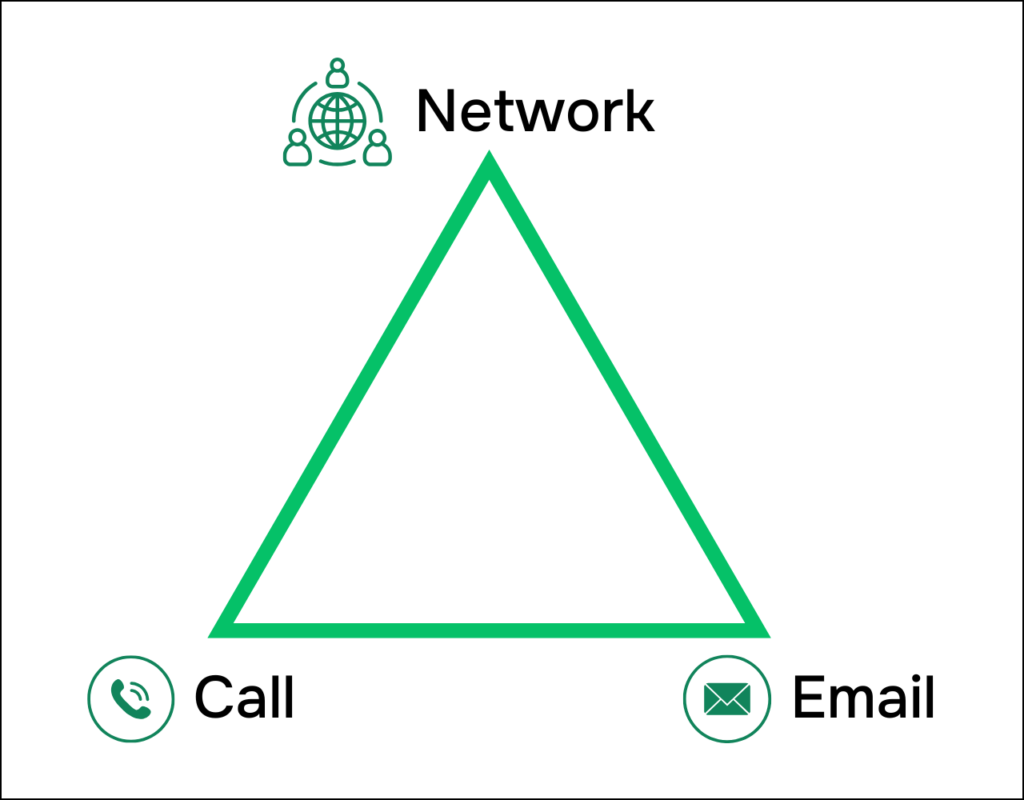
Hello and welcome to The GTM Newsletter by GTMnow – read by 50,000+ to scale their companies and careers. GTMnow shares insight around the go-to-market strategies responsible for explosive company growth. GTMnow highlights the strategies, along with the stories from the top 1% of GTM executives, VCs, and founders behind these strategies and companies.
Over the years we’ve seen too many startups spin their wheels on SEO – hiring agencies, creating tons of content, building backlinks – only to see… nothing.
So we brought in someone who’s seen it all: Eli Schwartz. He’s helped scale SEO for companies like WordPress, Quora, and Coinbase. Plus, he literally wrote the book on it (check it out here).
 Recommendations
Recommendations
ZoomInfo’s GTM25 virtual conference on May 7th.
The future of GTM is AI-powered. Join us and thousands of revenue leaders at ZoomInfo’s GTM25 virtual conference on May 7th to explore how high-performing teams are leveraging Go-to-Market Intelligence and AI to fuel their GTM strategies that help top teams crush their revenue goals. You’ll hear from industry experts, connect with peers, and learn about the latest AI advancements. Beyond insights, you’ll walk away with proven AI tactics that you can directly implement for your GTM team.
Save Your Spot – see you (virtually) there!
How to do SEO right in 2025 (hint: most companies get it wrong)
What high-performing teams do differently with SEO

1. Start with the hardest question: Should we even be doing SEO?
Not every company should invest in SEO. If people aren’t actively searching for what you sell, you’re shouting into the void.
“SEO isn’t mandatory. Just like billboards or paid social, it’s one tool, not the tool. You don’t have to do SEO. You have to understand your users and find them where they are.”
One founder Eli worked with was spending $15K/month on SEO for a QA tool, without realizing that every big customer had come through personal connections. Eli’s advice? Take that same $15K and host more dinners.
Another team building payroll software poured money into SEO. But when digging in, all the traffic came from employee-related searches, not the actual buyers. Right strategy, wrong audience.
2. People are the moat.
SEO isn’t about hacks, it’s about talent. The best outcomes come from teams who deeply understand their users and treat SEO like product development.
“If you don’t understand how buyers evaluate your product, SEO won’t just be ineffective, it might actively mislead you. If you don’t know your buyer’s journey, you don’t have product-market fit. SEO won’t help with that.”
Some companies waste time with generic content and shady backlinks. Others win by embedding SEO into cross-functional teams. At SurveyMonkey, Eli moved from marketing into product and built an internal SEO “team” made up of engineers, writers, and designers. It wasn’t about more blog posts, it was about crafting user-first experiences. That’s when growth took off.
3. Measure SEO like you measure paid channels.
Traffic is a vanity metric. Rankings don’t pay the bills. Great SEO shows up in CAC, leads, pipeline, and revenue.
Everyone talks about SEO’s excellent ROI compared to paid channels, but they rarely quantify their timing, investment, and returns assumptions. When you put real numbers down, the picture becomes much more interesting.
One company was spending $10K/month on SEO… until they asked customers where they came from. Every deal? Referrals. Not a single one from search.
SEO isn’t “free.” Hiring a top-tier SEO lead? ~$120K+. A full program with content, dev, and design? Potentially millions. It only makes sense if the ROI is there.
Eli has a simple rule: if a startup isn’t already running paid marketing, he won’t take them on for SEO. Why? Because without benchmarks, there’s no way to calculate ROI.
4. AI is your copilot, not your enemy.
Google doesn’t care if content is written by a human or a language model. It cares whether users find it helpful.
“Great AI content beats bad human content every time.”
Eli remembers when people tried gaming Google with auto-generated pages using RSS mashups. Didn’t work then, doesn’t work now. But when a client started pairing AI-generated drafts with human editors, and writing for intent not just keywords, results skyrocketed.
5. Want to win? Target the middle of the funnel.
Top-of-funnel content is saturated (and now AI-generated!). Bottom-of-funnel is pay-to-play. But the middle? That’s the goldmine.
Here’s an example:
Eli helped a Latin American e-commerce company move away from fluffy posts like “What is a sink?” and into focused content like “Best compact garage sinks with wide spouts.” Traffic quality improved. So did conversions.
It’s the same principle behind searches like “difference between South Beach and Miami Beach.” That’s a middle-funnel query. It’s not obvious, but it directly impacts a purchase decision, and it’s where SEO still shines.
6. Link building still matters, just not the way you think.
Forget blog comment spam and shady backlinks. The real value is in earned authority: PR, partnerships, and content people actually want to share.
At SurveyMonkey, Eli discovered that the White House had linked to a now-dead page. They revived it, turned it into a landing page, and watched the traffic roll in. That’s the kind of backlink Google respects.
Compare that to a client who had backlinks from domains that used to be massage parlors, now repurposed as “tech blogs.” Yeah… Google sees right through that. And now, so does AI.
7. SEO isn’t dying, it’s evolving.
Google’s algorithm updates and the rise of AI aren’t killing SEO. They’re weeding out garbage and forcing companies to level up.
Take Google’s “site reputation abuse” update – it tanked traffic for publishers like CNN who were ranking for things like “best blender” despite having no authority in kitchen appliances. You can’t fake relevance anymore. You actually have to be useful.
For Coinbase, the real SEO wins came not from more blog posts, but from scalable, search-driven pricing pages. Because that’s what users were looking for.
TL;DR key mental models for SEO:
SEO isn’t mandatory.
Just like billboards or paid search, it’s one tool. Not the tool.
“You don’t have to do SEO, just like you don’t have to buy billboards. You have to understand your users and find them where they are.”
No buyer journey = no SEO opportunity.
If you haven’t nailed PMF or don’t understand how users evaluate your product, SEO won’t help. It’ll just amplify confusion.
“If you don’t know your buyer’s journey, you don’t have product-market fit. SEO won’t help with that.”
Quality > origin.
Doesn’t matter who—or what—wrote it. If it’s helpful, it works.
“AI isn’t the issue, it’s whether the content is actually useful. Great AI content beats bad human content every time.”
Tag GTMnow so we can see your takeaways and help amplify them.
 More for your eardrums
More for your eardrums
What does it take to scale revenue from $20M to $450M – and stay in the CRO seat for over 6 years while doing it? Jeff Perry is a truly iconic revenue leader and the Chief Revenue Officer (CRO) at Carta where he scaled these revenue numbers, responsible for core software revenue across New Business, Upsell, Cross Sell, and Customer Success. Prior to Carta, Jeff led SMB Sales at DocuSign, and started his career at Oracle, where he rose from Strategic Account Manager to VP of Sales over a decade. Read some of the key takeaways from the conversation here.
Listen on Apple, Spotify, YouTube, or wherever you get your podcasts by searching “The GTM Podcast.”
 Startup to watch
Startup to watch
Writer – CEO May Habib is making bold moves, recently featured on the cover of Forbes for helping companies save millions in labor costs with AI. The company has opened four new offices and plans to grow the team to 600. Investors call her “the time traveler” and it’s easy to see why.
 More for your eyeballs
More for your eyeballs
Customer Marketing Technology Landscape Report. Maps the core subcategories of Customer Marketing and Advocacy platforms, as well as adjacent technology categories that customer marketing leaders must at least be conversant in. In this first-of-its-kind report, you’ll get clear, unbiased data from 200+ real-world practitioners on exactly what these tools do best (and worst) —so you can confidently build a tech stack that works.
5 ways to build brand awareness by Sydney Sloan. An exclusive fireside conversation with the CMO of G2 highlighting the new and evergreen strategies to build brand — including AI optimization, strategies for showing up in AI-generated answers, the rise of B2B influencers and the impact of referral programs.
Udi Ledergor’s new book, Courageous Marketing, is a marketing masterclass. You’ll learn how to grab attention, build loyal fans, and craft messaging that truly connects. A little hint on next week’s podcast episode is that you’ll get to hear directly from Udi himself.
 Hottest GTM jobs of the week
Hottest GTM jobs of the week
- Customer Success Manager at Closinglock (Austin)
- Account Executive at Fastbreak AI (Charlotte)
- Partner Customer Success Manager at Vanta (Remote – US)
- Sr. Customer Success Manager at Northbeam (Remote – US)
- ABM Manager at Document Crunch (Hybrid – Atlanta)
See more top GTM jobs on the GTMfund Job Board.
If you’re looking to scale your sales and marketing teams with top talent, we couldn’t recommend our partner Pursuit more. We work closely together to be able to provide the top go-to-market talent for companies on a non-retainer basis.
 GTM industry events
GTM industry events
Upcoming go-to-market events you won’t want to miss:
- Product Marketing Masterclass: April 15, 2025 (San Francisco, CA)
- Pavilion CMO Summit: April 17, 2025 (Atlanta, GA)
- SaaStr Annual: May 13-15 (San Francisco, CA)
- Web Summit: May 27-30, 2025 (Vancouver, CAN)
- Pavilion CRO Summit: June 3, 2025 (Denver, CO)
- GTMfund AGM: June 5-6, 2025 (NYC, NY)
- Pavilion GTM Summit: September 23-25, 2025 (Washington, DC)
This newsletter was written and edited by Sophie Buonassisi, Max Altschuler, Paul Irving and the GTMnow team (not AI!).
The post How to do SEO right in 2025 (hint: most companies get it wrong) appeared first on GTMnow.
 Recommendations
Recommendations More for your eardrums
More for your eardrums Startup to watch
Startup to watch More for your eyeballs
More for your eyeballs Hottest GTM jobs of the week
Hottest GTM jobs of the week GTM industry events
GTM industry events












